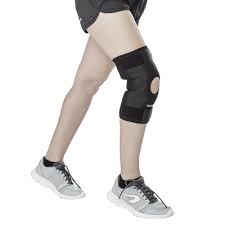
Nausea during your period is fairly common. Hormonal and chemical shifts during menstruation are usually to blame. These shifts are to be expected and should not be cause for alarm. However, nausea can sometimes be a sign of something more serious.
You may also experience other symptoms, like severe pain or a high temperature, besides nausea. If you are a woman experiencing these issues, the “bol behan chatbot” is here to help.
What Are The Most Common Causes Of Nausea During A Period?
Menstrual nausea can have several different origins. The severity of these conditions varies, so you should also pay attention to any other symptoms you may be experiencing.
- Dysmenorrhea
The most common cause of nausea during menstruation is dysmenorrhea or painful menstrual cramps. Increased uterine contractions are the root cause of pain in primary dysmenorrhea. This occurs when your uterine lining produces more prostaglandins, a hormone that regulates uterine contractions. Menstrual pain with a medical explanation, such as endometriosis, is called secondary dysmenorrhea.
Cramps can cause nausea because of how painful they are. Nausea may be induced by the high levels of prostaglandins that enter the bloodstream. This can be the reason why a pet fool might occur.
- Premenstrual Syndrome.
Physical and mental symptoms of premenstrual syndrome typically begin between the first and second weeks of a woman’s period. When your period starts, the symptoms persist but subside after a few days.
Doctors blame hormonal fluctuations during the menstrual cycle as the root of premenstrual syndrome. Dysmenorrhea, a symptom of premenstrual syndrome, can cause nausea from the combination of pain and elevated prostaglandins.
- Premenstrual Dysphoric Disorder
Those who suffer from PMDD have a severe form of PMS. The symptoms are similar but much more severe and can seriously impact daily life.
PMS and PMDD connect to hormonal shifts associated with the menstrual cycle. However, low serotonin levels, a natural chemical in your brain, can contribute to PMDD symptoms. Extreme mood swings could result from this imbalance. Physical symptoms of PMDD include nausea and cramping, just like PMS.
Related Blogspot:
The endometrium is the lining of the uterus. It will swell, fall apart, and shed during your monthly cycle. Endometriosis is the medical term for the growth of uterine-like tissue in other areas of the body. The ovaries, fallopian tubes, and uterine tissue are frequently impacted.
Like the endometrium, this tissue gets thicker and bleeds during your period. Like uterine tissue, it can’t leave the body, so it grows and causes pain. Extreme discomfort or even nausea may result.
Conclusion
Period nausea is a common experience for many women. Prostaglandin levels rise just before a woman’s period begins, which is the usual cause of PMS. The sickness should stop in a day or two. You can try home remedies for mild nausea while waiting for a doctor. You could try natural remedies for motion sickness. They will be able to diagnose your condition and recommend a course of treatment. Chhaa Jaa will teach you all about intercourse kya hota hai.



